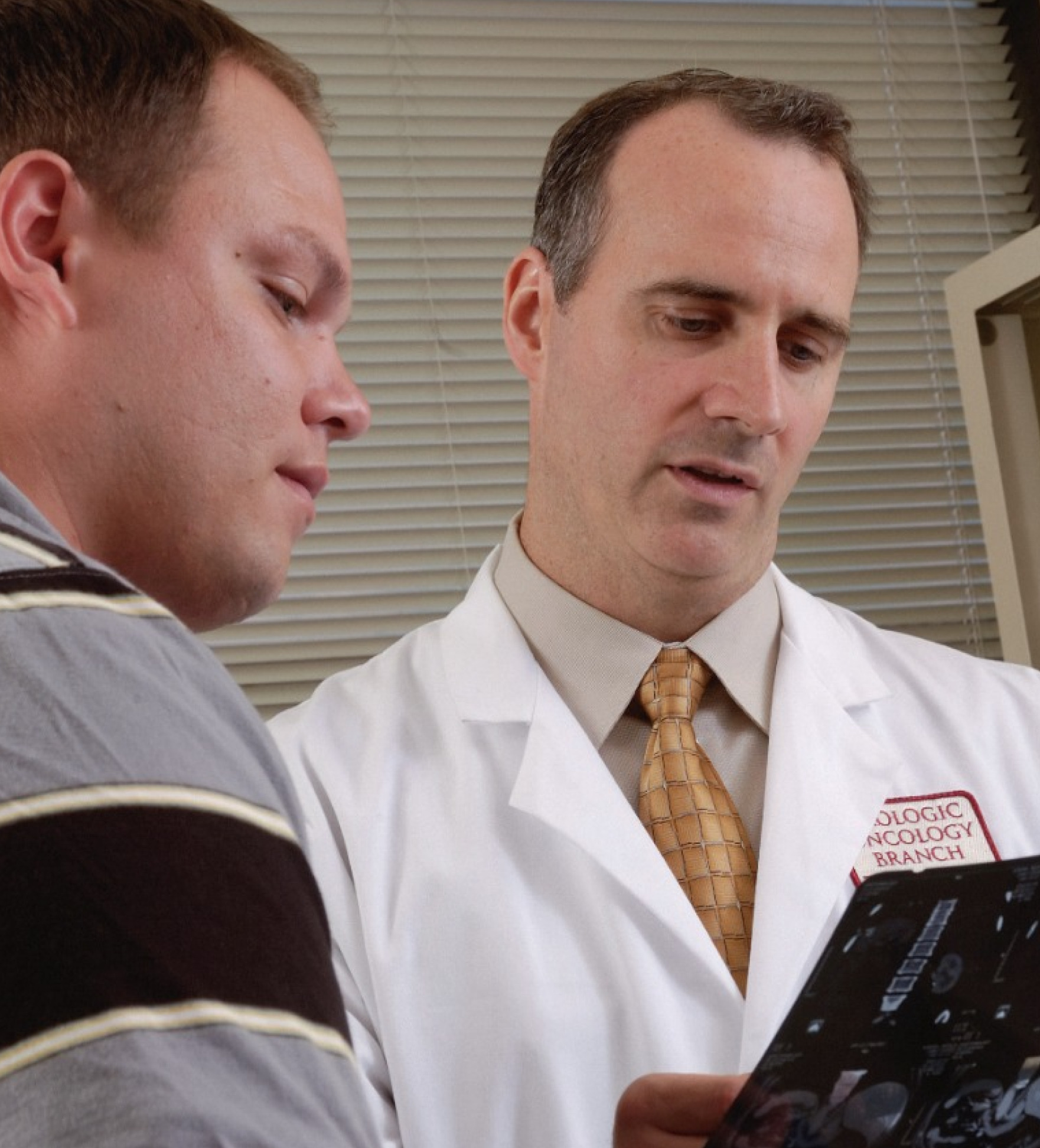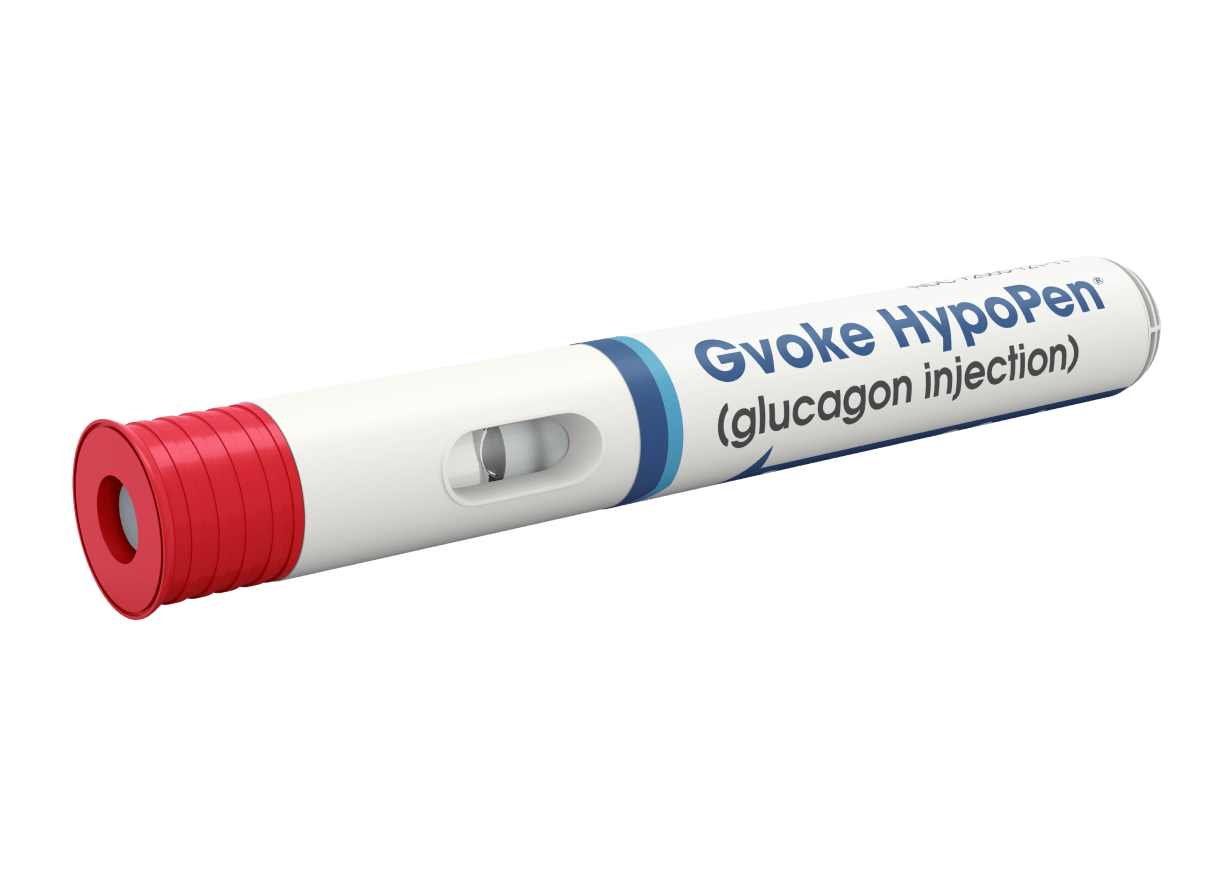Why Patients Need Ready-to-Use Glucagon in Their Diabetes Toolkits

Hypoglycemia: Common, Costly and Life-Threatening
Common
Most patients with T1D and ~50% of patients with T2D experience hypoglycemia.2,3
Costly
In 2011, the estimated annual cost for hypoglycemia-related hospitalizations was $1.6 billion.4
Life-Threatening
Risk of death is 3x higher in patients with diabetes who experienced severe hypoglycemia compared to those who experienced either no or mild hypoglycemia.5,6
Ensure patients have a treatment plan that includes ready-to-use glucagon
Glucagon can be lifesaving for people with diabetes
Because severe hypoglycemia is unpredictable and demands quick action, it’s important to help patients create a treatment plan that includes ready-to-use glucagon. Endocrine Society Guidelines recommend ready-to-use glucagon over glucagon preparations that have to be reconstituted.7
Who’s at Risk
Both type 1 and type 2 patients with diabetes may be at increased risk of severe hypoglycemia
Diabetes guidelines recommend all patients at increased risk of hypoglycemia to have a glucagon prescription.7,8 The American Diabetes Association (ADA) identified the following factors that increase a patient’s risk of hypoglycemia8:
- Use of medications known to cause hypoglycemia (e.g., insulin, sulfonylureas, meglitinides)
- Impaired kidney function
- Longer duration of diabetes
- Frailty and older age
- Cognitive impairment
- Alcohol use
- Impaired counterregulatory response, hypoglycemia unawareness
- Physical or intellectual disability that may impair behavioral response to hypoglycemia
- Use of many different types of medications
- History of severe hypoglycemic event
Glucagon is Underutilized and Under-Prescribed — But That Needs To Change

3 Reasons Patients Need Ready-To-Use Glucagon
Managing blood glucose levels is challenging. Even when diabetes is well-controlled and regardless of patients’ efforts, things don’t always go according to plan.
Fast-acting carbs aren't always enough.11
38% (16/48) of episodes of hypoglycemia resolved 15 minutes post-treatment with 16 grams of carbohydrates.
Technology does not eliminate risk of hypoglycemia.12
CGM and insulin pumps can help — but don’t eliminate — risk of severe hypoglycemia.
It’s simple to administer compared to traditional glucagon kits.13,14
Severe hypoglycemia is unpredictable and demands quick action. That’s why ease of glucagon administration matters.
Severe lows can happen to all of us
Kenny’s Gvoke HypoPen story
Fear of severe hypoglycemia shouldn’t derail a patient’s diabetes treatment plan. Learn why Kenny’s action plan includes Gvoke HypoPen.
Request a Free Demo Pen
By clicking “Request a free demo pen,” I understand I am giving Xeris Pharmaceuticals, Inc., its affiliates, and business partners permission to use the personal information provided in this registration form to contact me by the following methods mail, email, telephone call, other digital communication platforms (i.e., SMS, Social Media, Programmatic Display) or in-person about disease and product information, disease or product related events, support services, market research, and to share promotional and marketing information. By submitting this form, I consent to these uses and am confirming that I have read and agree to the Xeris Pharmaceuticals Terms of Use and Privacy Statement.

*In a pooled analysis of 2 clinical studies in adults, mean time to treatment success was 13.8 minutes with treatment success defined as plasma glucose increase from mean value (< 50 mg/dL) at time of glucagon administration to absolute value greater than 70 mg/dL or relative increase of 20 mg/dL or greater.
REFERENCES:
- Gvoke [prescribing information]. Chicago, IL: Xeris Pharmaceuticals, Inc.
- Davis HA, Spanakis EK, Cryer PE, Siamashvili M, Davis SN. Hypoglycemia During Therapy of Diabetes. In: Feingold KR, Anawalt B, Blackman MR, et al., eds. Endotext. South Dartmouth (MA): MDText.com, Inc.; Updated July 7, 2024. Accessed September 12, 2024. https://www.ncbi.nlm.nih.gov/books/NBK279100/
- Gehlaut RR, Dogbey GY, Schwartz FL, Marling CR, Shubrook JH. Hypoglycemia in Type 2 Diabetes–More Common Than You Think: A Continuous Glucose Monitoring Study. J Diabetes Sci Technol. 2015;9(5):999-1005. Published 2015 Apr 27. doi:10.1177/1932296815581052
- Goyal RK, Sura SD, Mehta HB. Direct medical costs of hypoglycemia hospitalizations in the United States. Value Health. 2017;20(9):PA498. doi: 10.1016/j.jval.2017.08.562
- Zoungas S, Patel A, Chalmers J, et al. Severe hypoglycemia and risks of vascular events and death. N Engl J Med. 2010;363(15):1410-1418. doi:10.1056/NEJMoa1003795
- McCoy RG, Van Houten HK, Ziegenfuss JY, Shah ND, Wermers RA, Smith SA. Increased mortality of patients with diabetes reporting severe hypoglycemia. Diabetes Care. 2012;35(9):1897-1901. doi:10.2337/dc11-2054
- McCall AL, Lieb DC, Gianchandani R, et al. Management of individuals with diabetes at high risk for hypoglycemia: an Endocrine Society clinical practice guideline. J Clin Endocrinol Metab. 2023;108(3):529-562.doi:10.1210/clinem/dgac596
- American Diabetes Association Professional Practice Committee. 6. Glycemic Goals and Hypoglycemia: Standards of Care in Diabetes-2024. Diabetes Care. 2024;47(Suppl 1):S111-S125. doi:10.2337/dc24-S006
- American Diabetes Association. Insulin cost and affordability. Accessed September 12, 2024. https://diabetes.org/tools-resources/affordable-insulin
- Data on file. Xeris Pharmaceuticals, Inc.
- Gingras V, Desjardins K, Smaoui MR, et al. Treatment of mild-to-moderate hypoglycemia in patients with type 1 diabetes treated with insulin pump therapy: are current recommendations effective?. Acta Diabetol. 2018;55(3):227-231. doi:10.1007/s00592-017-1085-8
- Lin YK, Richardson CR, Dobrin I, et al. Beliefs Around Hypoglycemia and Their Impacts on Hypoglycemia Outcomes in Individuals with Type 1 Diabetes and High Risks for Hypoglycemia Despite Using Advanced Diabetes Technologies. Diabetes Care. 2022;45(3):520-528. doi:10.2337/dc21-1285
- Valentine V, Newswanger B, Prestrelski S, Andre AD, Garibaldi M. Human Factors Usability and Validation Studies of a Glucagon Autoinjector in a Simulated Severe Hypoglycemia Rescue Situation. Diabetes Technol Ther. 2019;21(9):522-530. doi:10.1089/dia.2019.0148
- Meyer JM, Devona MC. U.S. Survey investigating gaps between patients and specialists in the treatment of severe hypoglycemia and impressions of the ease-of-use of liquid-stable glucagon for subcutaneous injection. Int Arch Endocrinol Clin Res. 2021; (1):025. doi:10.23937/2572-407X.1510025
Indication
GVOKE (glucagon) is an antihypoglycemic agent indicated for subcutaneous use for the treatment of severe hypoglycemia in adult and pediatric patients aged 2 years and older with diabetes.
Important Safety Information
- GVOKE is contraindicated in patients with:
-
- Pheochromocytoma because of the risk of substantial increase in blood pressure
- lnsulinoma because of the risk of hypoglycemia
- Prior hypersensitivity reaction to glucagon or to any of the excipients. Serious hypersensitivity reactions have been reported with glucagon, including generalized rash, and anaphylactic shock with breathing difficulties and hypotension
- GVOKE may stimulate the release of catecholamines from the tumor. If patient develops a substantial increase in blood pressure and a previously undiagnosed pheochromocytoma is suspected, 5 to 10 mg of phentolamine mesylate intravenously has been shown to be effective in lowering blood pressure
- In patients with insulinoma, administration of glucagon may produce an initial increase in blood glucose; however, administration may stimulate exaggerated insulin release from an insulinoma and cause hypoglycemia. If a patient develops symptoms of hypoglycemia after a dose of GVOKE, give glucose orally or intravenously
- Patients with insufficient hepatic stores of glycogen may not respond to GVOKE for treatment of severe hypoglycemia. Insufficient hepatic stores of glycogen may be present in conditions such as states of starvation, or in patients with adrenal insufficiency or chronic hypoglycemia
- A skin rash called necrolytic migratory erythema (NME), has been reported post-marketing following continuous glucagon infusion and resolved with discontinuation of the glucagon. GVOKE is not approved for continuous infusion. Should NME occur, consider whether the benefits of continuous glucagon infusion outweigh the risks
- Most common adverse reactions reported in adult patients were nausea, vomiting, injection site edema raised 1 mm or greater, and headache
- Most common adverse reactions reported in pediatric patients were nausea, hypoglycemia, vomiting, headache, abdominal pain, hyperglycemia, injection site discomfort and reaction, and urticaria
- Patients taking concomitant beta-blockers may have a transient increase in pulse and blood pressure. In patients taking concomitant indomethacin, GVOKE may lose its ability to raise glucose or may produce hypoglycemia. GVOKE may increase the anticoagulant effect of warfarin
Please see full Prescribing Information for GVOKE.
